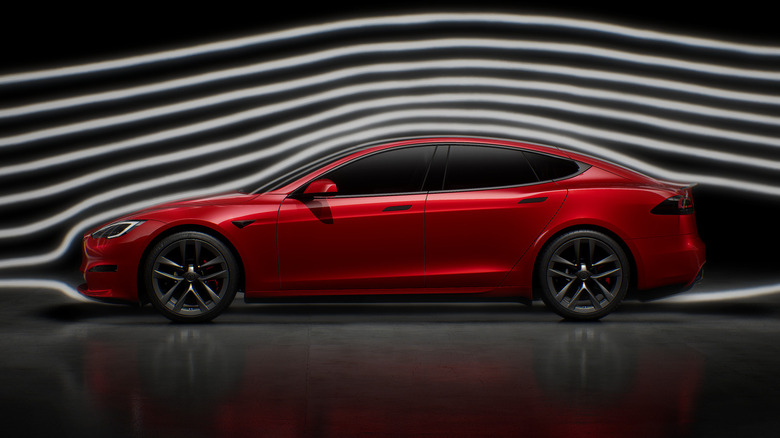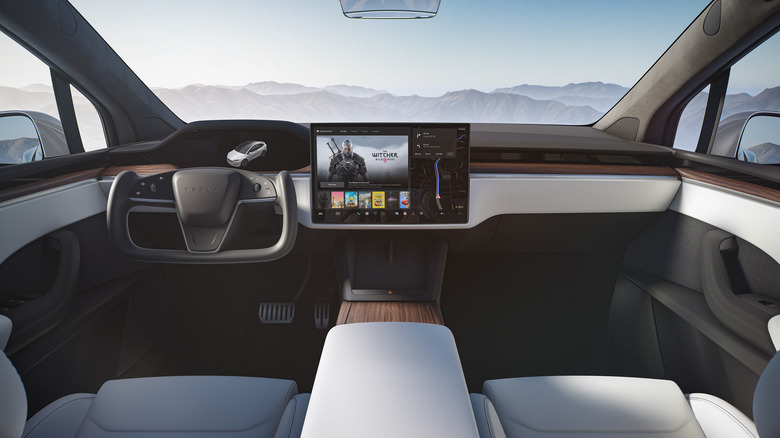Here's Why Teslas Get Recalled More Than Any Other Car
According to new research by iSeeCars, Tesla has the inglorious honor of having more product recalls than any other automaker. In fact, four out of the top five most recalled vehicles are Teslas, including the Model Y, Model 3, Model X, and Model S. Based on data from the National Highway Traffic Safety Administration (NHTSA), a Tesla Model Y is expected to be recalled 62 times over its lifespan, compared to the average car which is recalled only four times over a 30-year lifespan.
What's worse, recalls are typically concentrated in the first few years after a new car is sold, then decline over time. With Tesla, the recalls are happening consistently, or even increasing, as its vehicles grow older. On the surface, these grim statistics appear to build a serious case against buying a Tesla, but there is a silver lining.
Instead of time-consuming visits to a local dealership potentially interfering with one's work schedule, most of the Tesla recalls are mended by painless over-the-air (OTA) software updates. In fact, Tesla CEO Elon Musk once quipped whether the term "recall" and its negative connotation is even appropriate when the fix is handled remotely.
The process is enabling risk
To be clear, Teslas do have conventional mechanical issues, too. Recently, Model 3s were recalled for faulty seat belt fasteners, while Model Ys experienced improperly installed front suspension components. But the primary reason for the outsized number of Tesla recalls is the company's heavy implementation of fun features and driving modes that push the limits of safety regulations.
We mentioned that OTA software updates to fix recalls are great for vehicle owners because they free them from taking time to visit a dealership service department. But it's equally beneficial to automakers, which can remedy a flaw with a few keystrokes rather than spending millions of dollars to pay mechanics and other dealership staff. This logic is likely emboldening Tesla to keep releasing a plethora of cool features at the risk of the NHTSA later vetoing them. Since there's no mechanism for reviewing software prior to being released, the NHTSA can only request changes after the features are introduced, which contributes to the high number of recalls that we're seeing.
Some recalls are self-inflicted
The process isn't perfect to be sure, but Tesla could avoid at least some of the recalls by self-policing and applying a little more common sense. For example, because EVs are so quiet, they're required (at least in the U.S.) to have external speakers that make noise at low speeds to warn pedestrians of their presence.
Tesla engineers thought it would be a great idea to introduce a "boombox" mode that allowed drivers to play music through the vehicles' external speakers. The only problem was that boombox mode was operable while the vehicle was moving, negating the required-by-law "EV sound" to warn pedestrians of an approaching vehicle. In 2022, Tesla was forced to issue an OTA software update, technically another recall, so boombox mode only works when the car is in Park. One has to wonder why it wasn't designed that way to begin with?
In a nutshell, Tesla knows that regulators are seriously backlogged reviewing the latest technology and may be exploiting the situation by releasing all of these crazy features and driving modes — after all, they generate a buzz for the company and oodles of free publicity. If Tesla has to walk it back later, no big deal. On the flip side, maybe regulators need to operate more efficiently to keep up with technology, such as checking software before it goes out. EVs are complex by nature and their market share is only going to grow each year going forward.


